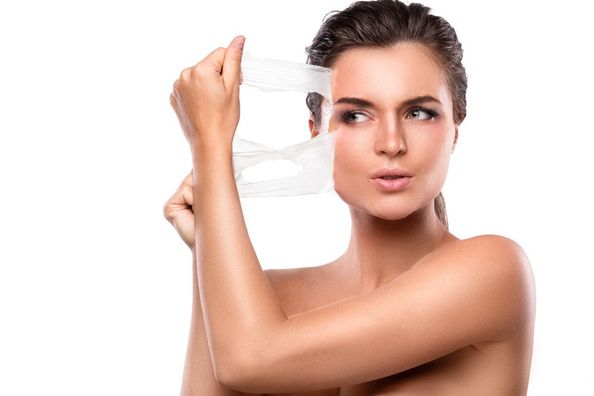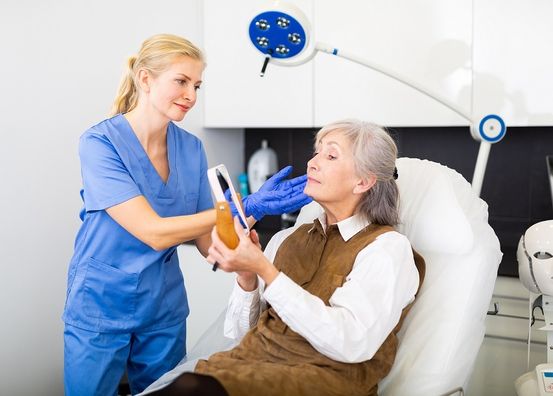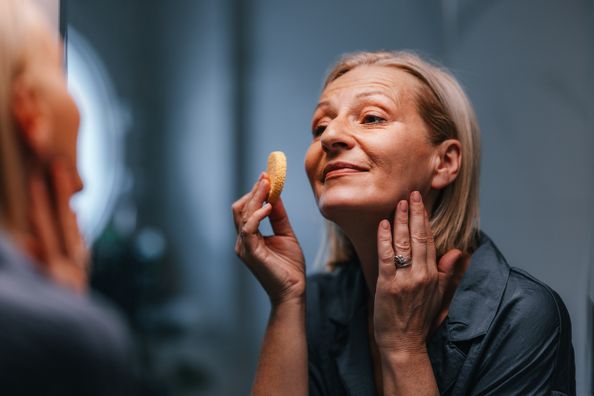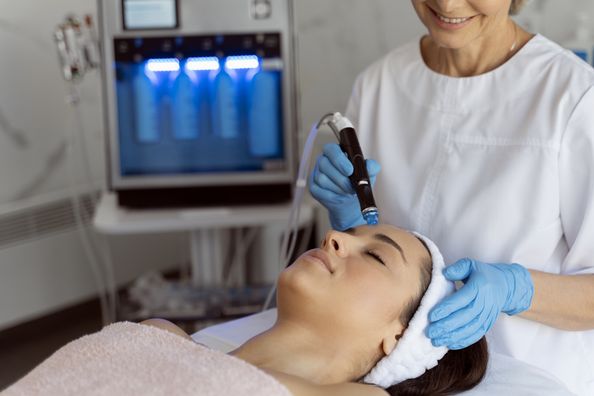Chemical peels are one of the most popular treatments that are sought after today. But they can sound scary, especially when you realize that acids are being used to exfoliate the skin. So why do people use them? Are they beneficial for everyone? To help with those who may have some doubts and questions about peels, I will explain why chemical peeling is not only safe, but there is a chemical peel that is right for everyone no matter what skin type or condition.
Using acids to exfoliate the skin possibly began with the Egyptians, who have been known to use fruit and milk acids more than 5,000 years ago. Around 1903, we had the first recording of a phenol peel being used by a physician to remove acne scars. A lighter and more tolerable phenol peel was developed in Europe during the 1930’s and later came to the United States when a European trained esthetician moved to Los Angeles. She spread the practice of chemical peeling among dermatologists and plastic surgeons, and we believe that this is when the use of alpha hydroxy acids, commonly known as glycolic acid, were introduced. As the practice developed, using different strengths of glycolic acid and the introduction of salicylic acid made the practice of peeling safer and more widely used for esthetic purposes.
Today, chemical peels have gone from basic acids that can sometimes be unstable to advanced proprietary blends of acid, minerals, antioxidants and neutralizing agents. They are the new “smart” peels because they can target specific skin conditions with great predictability. Chemical peels are now recommended for a variety of skin types and conditions.
The whole point of applying a chemical peel is exfoliation. The strength of each peel corresponds to how deep the acids penetrate, or basically, how much exfoliation is desired. And because exfoliation can improve almost every skin condition; sun damage, acne, hyperpigmentation, most will benefit from a chemical peel.
There are basically three levels of peels: superficial, medium depth and deep. Superficial peels penetrate into the upper layers of the skin called the epidermis, removing old skin cells from the surface, and they are typically either a glycolic or a salicylic acid. Superficial peels are recommended for “surface” problems, such as rough texture, skin dullness from aging, excess oiliness, comedones (commonly known as blackheads) and fine lines. Superficial peeling can reveal more skin radiance, increase smoothness and create a more even skin tone appearance.
Medium depth and deep peels penetrate below the epidermis. These deeper peels induce a controlled wound to the dermis that will begin a healing response that results in more aesthetically pleasing skin. They are typically a blend of acids such as lactic, glycolic, salicylic, phenols, resorcinol, phytic, pyruvic, retinoic acids, and TCA (trichloracetic acid), etc. These peels are recommended for “deeper” skin problems, such as photo-aging, fine lines and wrinkles, pigmentation from sun or melasma, acne, and mild acne scarring. As the skin repairs itself, there may be 3 – 7 days that the skin will be red and go through a peeling process of shedding the old cells and the new cells replacing them. This process is called “re-epithelialization” and usually starts 24 hours after wounding. One of the benefits of this healing process is that it triggers an increase in fibroblast production, a major dermal component of collagen. Improvement in hyperpigmentation, age spots and a more youthful appearance can require repeated peels, but the results can be dramatic.
Sensitive skin, dark skin color and certain inflammatory conditions can receive chemical peels, but there may be some limitations. Darker skin types must be careful when using deep chemical peels. The skin may respond in the wound healing process by darkening, which is why, generally, only superficial peels are recommended. Inflammatory skin conditions like acne, acne rosacea and seborrheic dermatitis can use superficial peels with care but, salicylic, lactic and mandelic acids are preferred over alpha hydroxy acids that can sometimes be too stimulating for these conditions. These particular acids are anti-inflammatory, reduce redness, and help control flare-ups that are due to cellular buildup of dead skin. Chemical peels can help manage problematic skin by giving the skin a smoother and clearer complexion.
There are many varieties of chemical peels and knowing which one is right for you may be difficult. Many factors have to be considered, but a trained esthetician will take your medical history, skin condition and lifestyle habits when determining which peel is most beneficial for you. Whether you need a superficial or deep peel, better looking skin is the result, and who doesn’t want that?
So yes — “To Peel” is the answer.
Health Topics:







